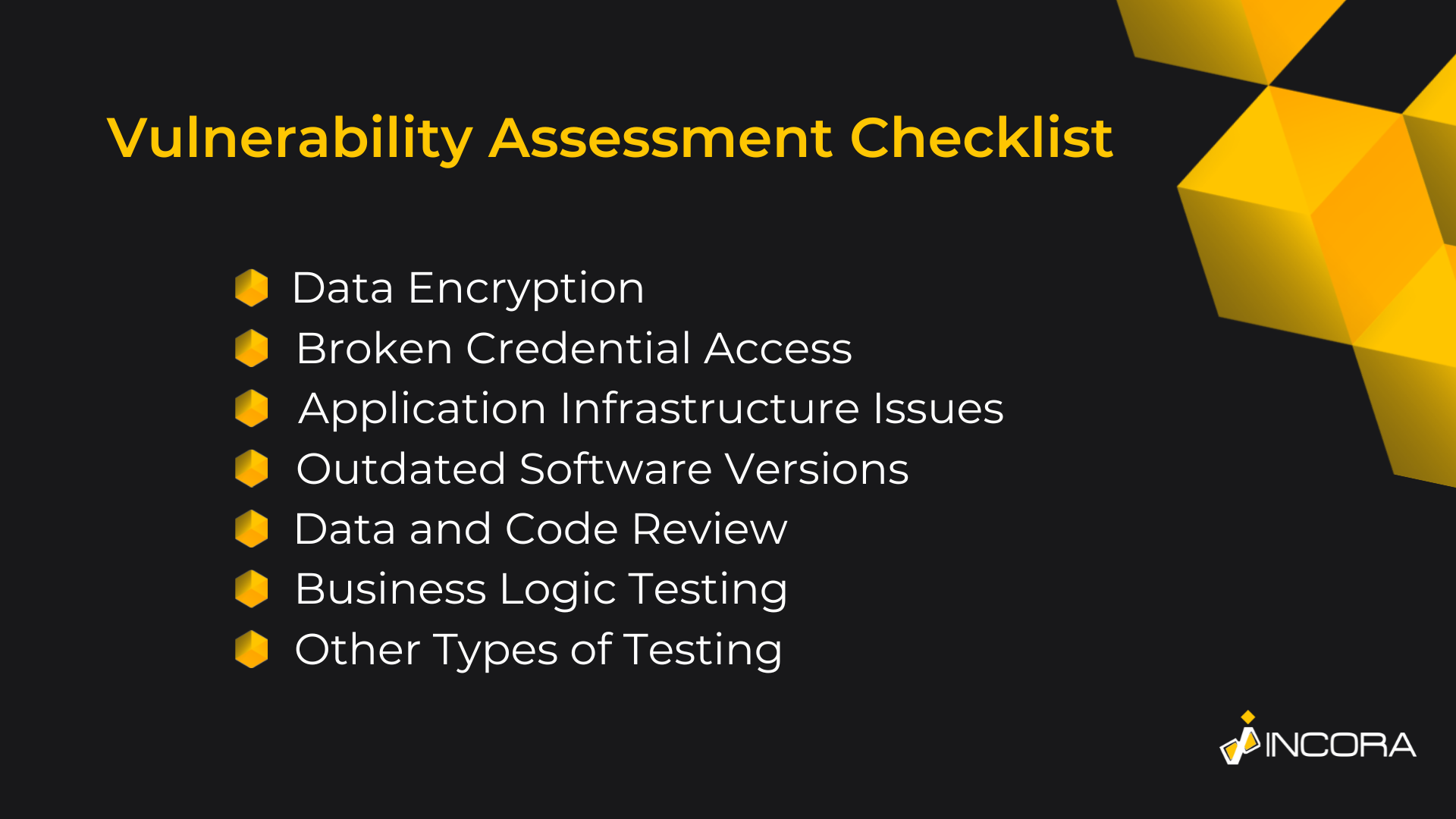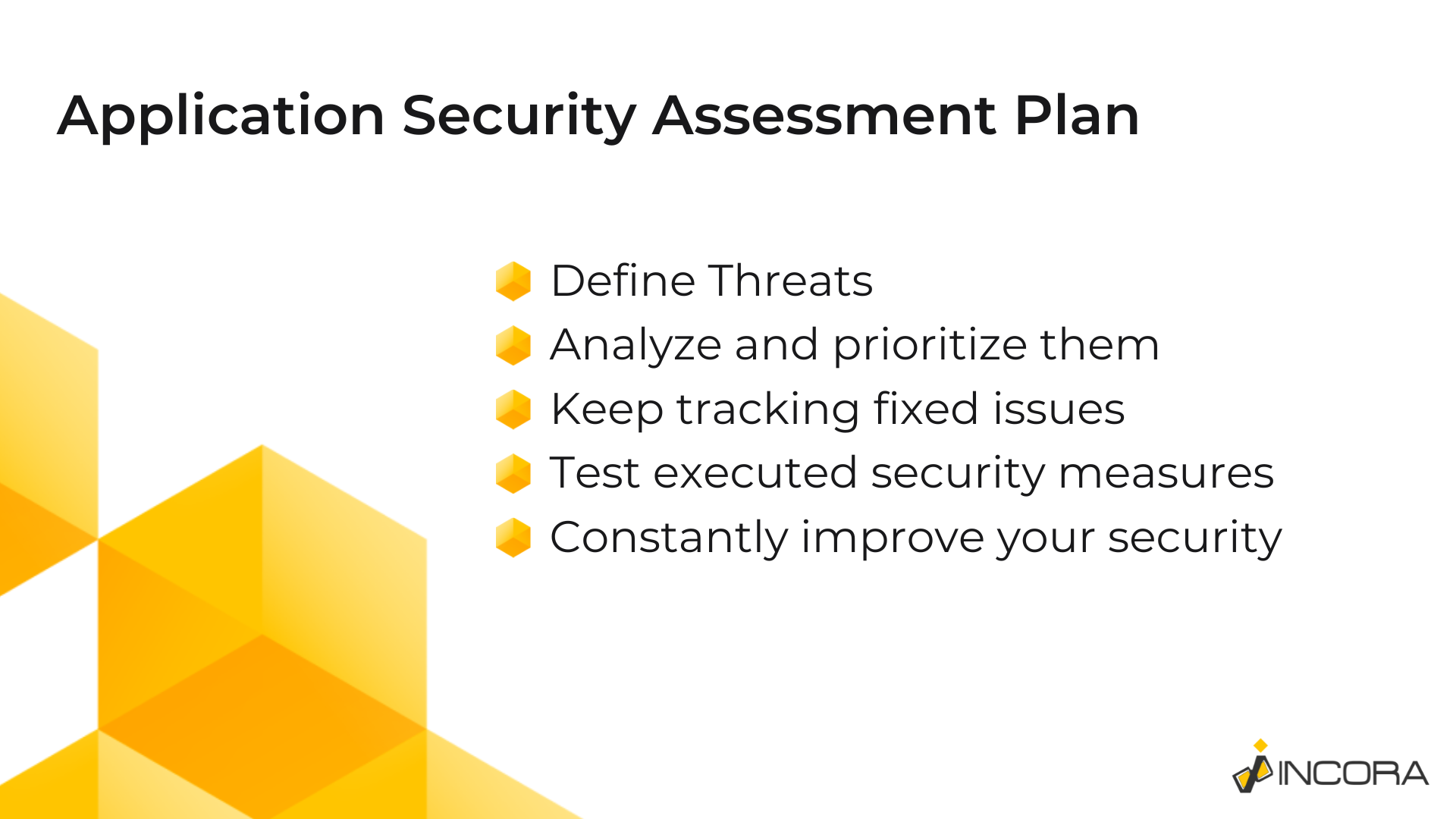Application Risk Assessment Checklist: Top 10 Must-Haves
May 10, 2023 • 1597 Views • 14 min read
Tetiana Stoyko
CTO & Co-Founder
One of the essentials, without which it is impossible to imagine any modern custom software development service - is its safety and security measures. Clearly, there is a wide range of various tutorials and guides on Do’s and Don'ts, related to security measures.
For instance, one of the most famous and widespread lists of potential security threats and vulnerabilities - is the OWASP list. Yet, this is not an ultimate security guideline and checklist. Instead, it is rather a list of the most popular or common security vulnerabilities in the field of web development.
Clearly, there are various alternatives to such vulnerability assessment checklists. On the one hand, it is a great and useful development tool, which helps to easily estimate the most common attacks, which most likely be used against your application by the threat actors.
However, it is important not to blindly follow such ready-made checklists of potential threats. In other words, the best way to secure your software project is to understand the specifics and perform regular security checks, in order to better understand the specifics and unique weaknesses of your software product, which can and, most probably, will vary from the traditional vulnerabilities lists.
Therefore, to better understand the level of your application security gaps, you have to regularly perform application security assessments, also known as application security reviews.
To make your life a little easier, we created a vulnerability assessment checklist, which should help you to better understand the key indicators and aspects to pay attention to, as well as the steps to take during the application security monitoring process. But before that, let’s start with the very beginning.
What is an Application Risk Assessment Checklist?
As we said before, it is similar to application security assessment, i.e. the process of checking the efficiency of application security standards, and other measures, designed to secure your software application from hacker attacks, data leaks, or other undesired actions.
To make it simple, an application security review is a preventive measure, which is performed regularly in order to detect possible weak application security standards and fix them before the ill-wishers use them to harm your app. Clearly, previously mentioned vulnerability lists are a great start for any app security monitoring. However, this is only the beginning of such a process.
Most of these checklists include only the most known and popular ways to somehow interfere with working processes. Still, there are a lot of other less common, yet dangerous security threats, worth taking care of.

One of the best security practices is to ensure, that your entire development team takes care of security procedures at any stage of the development instead of dumping all the work on the security team. In other words, the more aware your developers are - the easier it is for the DevSecOps to do their job and keep an app protected.
One of the easiest ways to do so - is simply maintaining various regular training for the team, creating a guidebook for the onboarding developers, and using tests as a common practice just to keep your team always prepared.
However, despite all the potential benefits of such team management methods, they won’t replace a full-fledged application QA security team, as well as their routine duties. Anyway, it is still a great idea to combine both practices for better results.
Vulnerability Assessment Checklist
There are numerous practices, designed specifically for application security monitoring. Apart from team training and tests, as well as different vulnerability lists, it is possible to name at least a few extra must-have application security standards.
Data Encryption
It is one of the simplest and one of the most powerful ways to improve application security standards. Clearly, it is not the best idea to store various types of sensitive data in the usual text format. Instead, it is better to encrypt it as well as possible. For instance, users’ ID or other credentials, as well as personal information, etc. - all these should be secured by encryption.
So, even if hackers receive access to your databases, sensitive data will be additionally protected and, most likely, ill-wishers will get no chance to proceed further and exploit it. This is why it is important to check the efficiency of your data encryption as one of the first items in your application security assessment.
Broken Credential Access
Additionally, access by credentials belongs to the must-have application risk assessment checklist.
Just to clarify, we are talking not about only the user’s login, but the access for team extension developers. So, each time you perform an application security review, always check for broken credentials or outdated ones. Experience shows, that there will be one or two such broken access points. So, it is better to find them faster, than the potential hacker does.
Application Infrastructure Issues
This is also a must-have step in the vulnerability assessment checklist. Clearly, your app is divided into various software solutions, code samples, third-party services, APIs, etc.
All of these application components should be regularly checked. During this step of application security review pay attention, especially to the open-sourced security holes. For instance, it is better to regularly check various documentation, community forums, or specified platforms like GitHub, looking for any mentions about the possible vulnerabilities of the software, you have ever used during the software development lifecycle.
Look for Outdated Versions
Do not underestimate the role of updates. Learn the lesson from cloud security methods, like the AWS best practices: if there is a new version of the software, you are using - update it as soon as possible.
In other words, while you are maintaining application security monitoring, don’t forget to check for any updates on your software. This can help to avoid unwanted potential risks and keep the system secure.
Data and the Code Review
Another step in application security monitoring is to regularly check for the combination of sensitive or any other data and the source code. Sometimes, developers can accidentally leave pieces of important input data in code samples.
Thus, one of the preventive steps is to regularly monitor the code units to delete or hide such inputs or other data fragments within the lines of code, which can be later used against your app.
Don’t Forget about Business Logic
As well as the rest of the application components, business logic should also be tested. It is a must-have step of any application risk assessment checklist because helps to better understand how the application behaves in various circumstances, especially the ones, which are considered unpredicted.
So, having your business logic tested helps to better predict possible outcomes for different scenarios and implement required application security standards, as well as other algorithms of behavior to avoid possible leaks or exposing other weak points in some cases.
Different Types of Testing
One of the key aspects, which makes any vulnerability assessment checklist efficient - is to perform all the possible types of testing. It can be penetration testing, front-end testing, when developers are looking for potential vulnerabilities and weak points of user interfaces and the possibilities to use them against the users, preparations for various external attacks like phishing, DDoS, cyber-attacks, etc.
Eventually, the foregoing application risk assessment checklist is not full. Yet, all these steps are must-have aspects, that should be included in any such checklist.
How to Conduct the Application Security Assessment
Frankly speaking, all the previously mentioned steps should be performed during each application security review. Still, apart from various checklists or must-have actions, application security assessment also has a theoretical part, when you have to foresee potential threats and figure out how to deal with them.
Therefore, here is an approximate plan on how to conduct an application security assessment:

-
Try to define potential threats. It might include different ways of penetrating into the system and obtaining access to vulnerable or important data. Ideally would be to create a strategic list of all kinds of threats, and then divide it into various smaller categories, which will help to deal with similar vulnerabilities step-by-step.
-
After having such a global list of weaknesses, you should analyze and prioritize them. Once again, it will help to consider what weak spots should be taken care of first of all, gradually transitioning to less critical security issues.
-
Don’t give up on the fixed bugs and security weaknesses. After dealing with some security issues, keep tracking these vulnerabilities to make sure, that they won’t appear again in some time. It is one of the most important principles of application security monitoring.
-
The same is true for any security implementations: track and regularly test already executed security measures. This will help to better understand the overall security policies and to figure out whether there are any other loopholes in your recent security measures.
-
Finally, constantly improve your security controls. Thanks to application security monitoring and tracking all the changes, related to the security of an app, you can create a further plan on how to improve your application security levels and make them better and even more efficient.
Final Thoughts
Security always matters. Regardless of the scalability, complexity, or popularity of your application, it is always worth implementing the best possible security policies. One of the most effective ways to develop a secure and safe software application - is to hire a dedicated team, that has enough experience in project development.
To find one, you will always have to check the case studies and learn what security services your future software vendors can propose in addition to the software project development itself.
What’s your impression after reading this?
Love it!
1
Valuable
2
Exciting
1
Unsatisfied
1
FAQ
Let us address your doubts and clarify key points from the article for better understanding.
Why is an Application Risk Assessment Checklist important?
An Application Risk Assessment Checklist is important because it helps ensure that software applications are secure and reliable. By identifying potential risks and taking steps to mitigate them, organizations can protect their data and reputation.
How should an Application Risk Assessment Checklist be used?
An Application Risk Assessment Checklist should be used as a guide to assess and mitigate risks associated with the application throughout its lifecycle, from design and development to deployment and maintenance.
Who should be involved in creating an Application Risk Assessment Checklist?
The creation of an Application Risk Assessment Checklist should involve a multidisciplinary team, including developers, testers, security professionals, and business stakeholders.
How often should an Application Risk Assessment Checklist be updated?
An Application Risk Assessment Checklist should be updated regularly, at least once a year, or whenever there are significant changes to the application or its environment.
What is the difference between a vulnerability assessment and a penetration test?
A vulnerability assessment involves scanning a system or application for potential vulnerabilities and producing a report that details the vulnerabilities found. A penetration test involves attempting to exploit those vulnerabilities to see if they can be used to gain unauthorized access to the system or application.
Can a risk assessment be outsourced to a third-party provider?
Yes, a risk assessment can be outsourced to a third-party provider, such as a security consulting firm. However, it is important to ensure that the provider is reputable and has experience in conducting risk assessments for similar applications.
you may also like
Let's talk!
This site uses cookies to improve your user experience. Read our Privacy Policy
Accept

Share this article